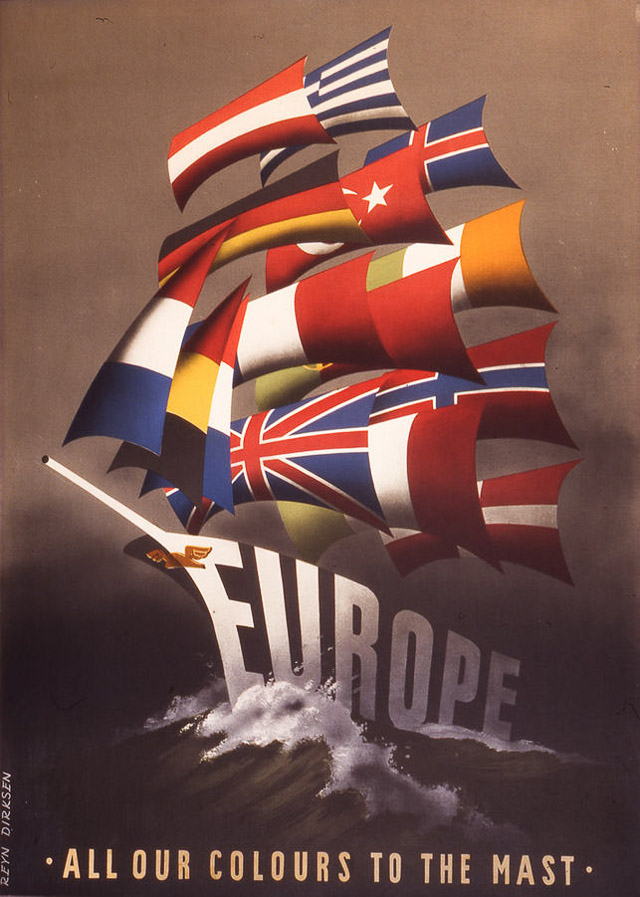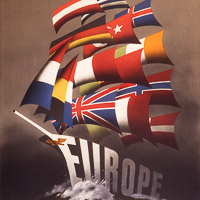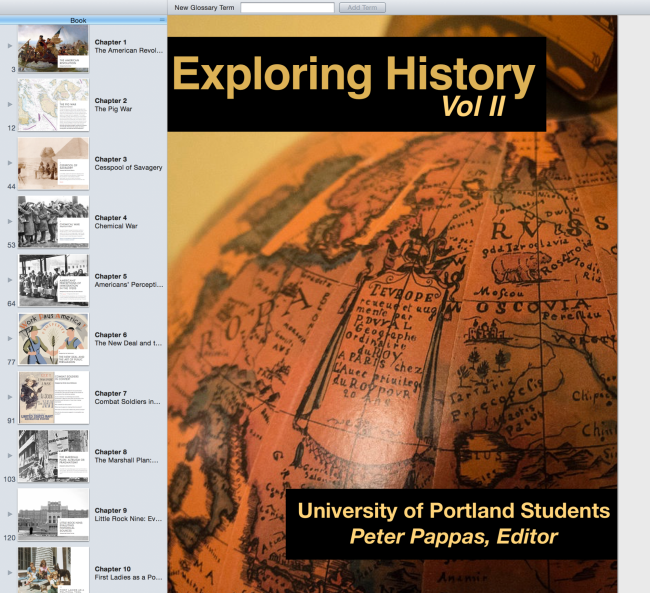 My Social Studies Methods class at the University of Portland recently published a free multi-touch iBook – Exploring History: Vol II. It features ten engaging questions and historic documents that empower students to be the historian in the classroom. For more info on our project and free download of multi-touch iBook version click here.
My Social Studies Methods class at the University of Portland recently published a free multi-touch iBook – Exploring History: Vol II. It features ten engaging questions and historic documents that empower students to be the historian in the classroom. For more info on our project and free download of multi-touch iBook version click here.
To better publicize student work, I’m featuring each chapter in it’s own blog post. More in series here.
Essential Question: What does it mean to be the victor in war? Is there a responsibility to rebuild the enemy?
The Marshall Plan: Altruism or Pragmatism?
by Samuel Kimerling Download as PDF (11.7MB)
After WWII the United States gave more than $12.5 billion in aid to Europe. Was this all in the name of humanitarian aid? Or were there other economic and political goals behind the plan? This monumental effort raises some important questions regarding the nature of post-war policy.
- What does it mean to be the victor in war?
- Is there a responsibility to rebuild the enemy?
- Does the price you pay for victory entitle you to spoils?
- Did the Marshall Plan represent altruism on the part of the U.S. or pragmatism in gaining economic and strategic advantages?
We will examine original documents to answer these questions.
Reflection by Samuel Kimerling
After switching my topic from the more obscure food history topic to the much more document rich Marshall Plan, my issue was not where to find documents, but just the opposite. There were so many great documents, I found myself following lead after lead on possible directions to take the assignment. While I learned a tremendous amount about the Marshall Plan, the state of Europe after WWII, and the different opinions throughout U.S. and Europe about the plan, I didn’t feel like I was getting any closer to completing the assignment. But I was finding photos, documents, and getting more information. Through this research I was able to narrow my focus and choose an angle on which to focus: the differing views on the Marshall Plan from Europe, Russia, and at home in the U.S.. My next challenge was to step away from the history and just look at the documents. What was I trying to say? What were the documents telling me? I finally focused on assembling documents that could tell a story. Once I had a clear narrative of what I wanted the students to see, the guiding questions practically wrote themselves. This assignment has been exciting for me on two main levels. First learning how to write this type of assignment for my students will be something I will continue to work on throughout my career. I am a big believer in having students think like historians. The other facet is just how much I enjoyed researching the history surrounding the Marshall Plan. Reading all the documents and seeing all the photos was like a DBQ itself. I will continue to practice, learn, and hopefully inspire my students to do the same.
~ Sam Kimerling Twitter/@kimerlin171
Image credit: ”Europe Plan Marshall. Poster 1947″ by Reijn Dirksen, published Economic Cooperation Administration – Source. Licensed under Domini públic via Wikimedia Commons




